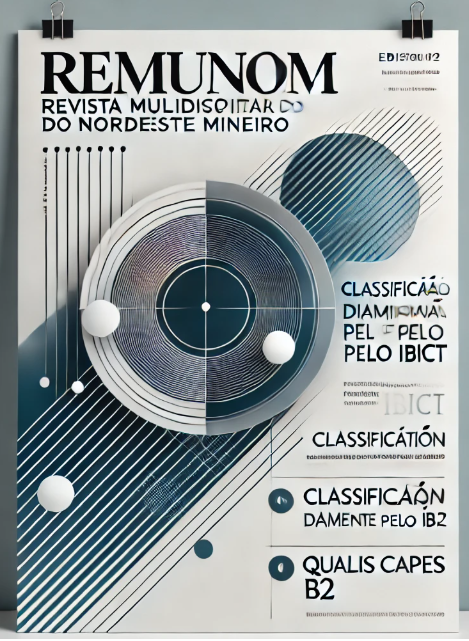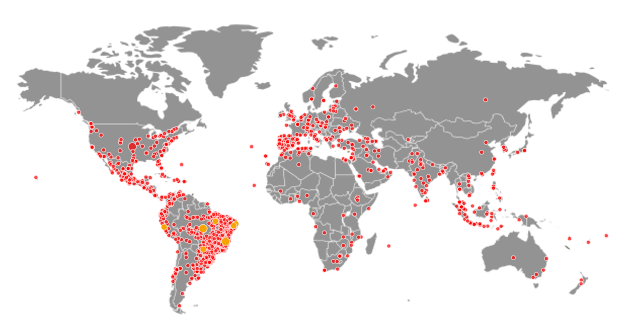UNDERSTANDING MULTIPLE INTELLIGENCES PRESENT IN THE SCHOOL ENVIRONMENT ACCORDING TO GARDNER'S THEORY
DOI:
https://doi.org/10.61164/rmnm.v7i1.3808Keywords:
School Environment; Education; Multiple Intelligences; Gardner's Theory.Abstract
The present research aimed to review and analyze, in a narrative way, studies and publications that address the different multiple intelligences identified in the school environment, with the aim of understanding the types of intelligences. To this end, a bibliographic research of the narrative review type was developed, with a qualitative approach through the study of scientific articles and other academic works found on the search platform “Google Scholar” using the terms “Theory of Multiple Intelligences”. The analysis was carried out in an interpretative way. As a result, it was found that the theory of multiple intelligences argues that human intelligence is composed of different abilities, and not by a single general capacity. Among these are linguistic, logical-mathematical, spatial and musical. Also noteworthy are the corporal-kinesthetic, interpersonal and intrapersonal. Each corresponds to different ways of learning, acting and expressing oneself. Naturalistic intelligence completes the group, focusing on the connection with nature. It is considered that studying multiple intelligences allows recognizing the individualities of students and expanding their ways of learning. With this, the school can offer a more intentional and comprehensive education.
References
ALBINO, Letícia Moreira de Souza; BARROS, Sarah Gonçalves. A teoria das inteligências múltiplas de Gardner e sua contribuição para a educação. Revista Acadêmica Educação e Cultura em Debate, v. 7, n. 1, p. 148-168, 2021. Disponível em: https://unifan.edu.br/revistas/index.php/RevistaISE/article/view/683. Acesso em: 10 jan. 2025.
CASARIN, Sidnéia Tessmer. et al. Tipos de revisão de literatura: considerações das editoras do Journal of Nursing and Health. Journal of Nursing and Health, v. 10, n. 5, 2020.
FERREIRA, Aurélio Buarque de Holanda. Mini Aurélio: o dicionário da língua portuguesa. 8. ed. Curitiba: Positivo, 2010.
GARDNER, Howard. Inteligências Múltiplas: a teoria na Prática. Porto Alegre: Artmed, 1995.
JUNIOR, Jonas Bach; MARTINS, Tiago Caetano. Inteligências múltiplas na prática escolar: a teoria e as suas primeiras aplicações na educação. EDUCA - Revista Multidisciplinar em Educação, v. 9, p. 1–29, 2022. Disponível em: https://periodicos.unir.br/index.php/EDUCA/article/view/5942. Acesso em: 10 jan. 2025.
LOPES, Nathalie Carril Pontes. As contribuições da teoria das inteligências múltiplas na Educação Infantil. 27f. Trabalho de Conclusão de Curso (Licenciatura em Pedagogia) - Universidade Federal do Amazonas, Manaus-AM, 2024. Disponível em: https://riu.ufam.edu.br/bitstream/prefix/8619/2/TCC_NathalieLopes.pdf. Acesso em: 15 fev. 2025.
SOUZA, Gleyson Miranda de; SITKO, Camila Maria. A Teoria das Inteligências Múltiplas no processo de ensino e aprendizagem e a atividade criativa. Scientia Plena, v. 18, n. 8, 2022. Disponível em: https://scientiaplena.org.br/sp/article/view/6416. Acesso em: 5 jan. 2025.
ROTHER, Edna Terezinha. Revisão sistemática x revisão narrativa. Acta Paul Enferm., v. 20, n. 02, p. 1-2, 2007.
TRAVASSOS, Luiz Carlos Panisset. Inteligências Múltiplas. Revista de Biologia e Ciências da Terra, v. 1, n. 2, 2001. Disponível em: https://www.redalyc.org/pdf/500/50010205.pdf. Acesso em: 04 fev. 2025.
Downloads
Published
How to Cite
Issue
Section
License
Copyright (c) 2025 Revista Multidisciplinar do Nordeste Mineiro

This work is licensed under a Creative Commons Attribution-NonCommercial-ShareAlike 4.0 International License.




